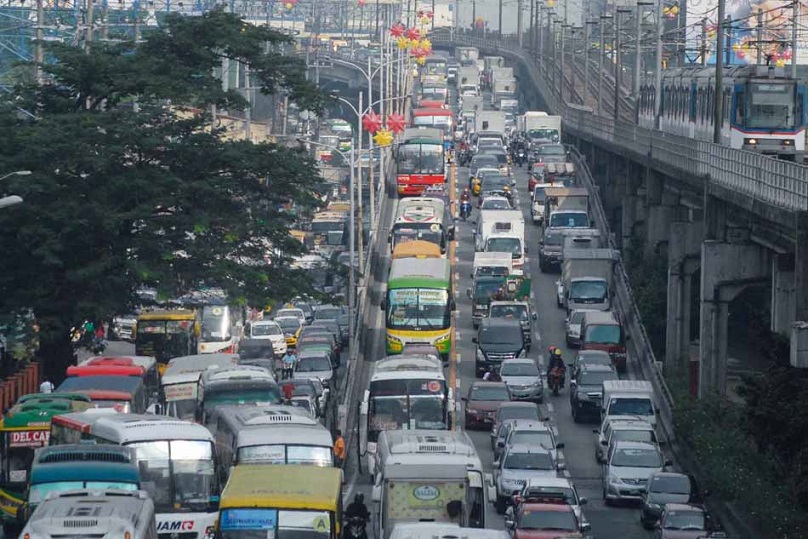
A normal day in EDSA. Photo from ABS-CBN.
It’s not even Christmas yet – though it is the Christmas season as far as Filipinos go – and already Facebook is filled with unprintable comments about the traffic situation in and around Metro Manila.
“Even on a Sunday!” said one post. “It’s worse on Saturdays – no coding!” said another.
One was even more appalling: “I left UP Diliman at 5pm and got home to Las Piñas at 12:05am – 7 hours! So much time wasted!”
Truly, it has long ceased to be a laughing matter.
I have to admit that getting caught in traffic is NOT my daily reality. I live and work within BGC, and it takes me about 20 minutes to get to work and 15 minutes to get home. But the reality of traffic hits me whenever I need to cross Edsa to get to Makati or, worse, need to drive to Diliman for a meeting with UP students or to Ortigas with colleagues in the Chamber of Mines.
“Hindi na siguro maaayos pa ‘yan (it looks like it’s hopeless),” said a Grab driver recently.
And yes, it seems so. But I don’t think so – provided authorities will have the political will to act and the public will realize that they can’t demand solutions without some sacrifices all around.
My own thoughts around this problem are inspired by experiences of neighbors.
First off, the problem of traffic is all about how to move people from place to place in the most efficient manner. And that means getting more people around in fewer vehicles. It means public transport that is so efficient and so reliable that individuals would prefer to leave their cars behind – indeed not buy cars at all! It doesn’t mean widening roads – that’s second priority; it means answering the question “how can we make public transport more reliable and the preferred means of travel by people of all ages and walks of life”?
I say we reduce the number of jeepneys and tricycles from main routes and increase the number of buses. And then hire bus drivers on fixed salaries while operating their buses on fixed schedules 24/7. So many problems arise when drivers are paid on commission basis – they compete for passengers and they disappear by midnight. It is no longer public service.
Once public transport is a seamless web of interconnected routes (LRT/MRT/buses/jeepneys) that cover transport needs 24/7, then we impose a COE system similar to Singapore. We bid out slots for private vehicles that people need to obtain before being allowed to buy their own vehicles. And vehicles have a fixed service life. Once your vehicle reaches its maximum age then you give up your slot and it is bidded out again. I can hear the objections: “Only the rich will be able to afford cars!” But why will you still need cars if public transport is already a seamless web? Just get a rental or Grab if it’s necessary.
Is it a hopeless case? No, not if authorities plan things well and sell the idea to the public.
And no, not if authorities stand their ground despite protests from a noisy few.
We don’t need to reinvent the wheel because others have done it and we can learn from their experience. But maybe that’s the problem: we refuse to learn from mistakes – ours or those of others!
(This article first appeared in Malaya Business Insight.)